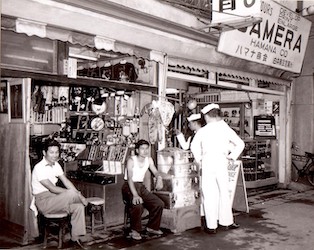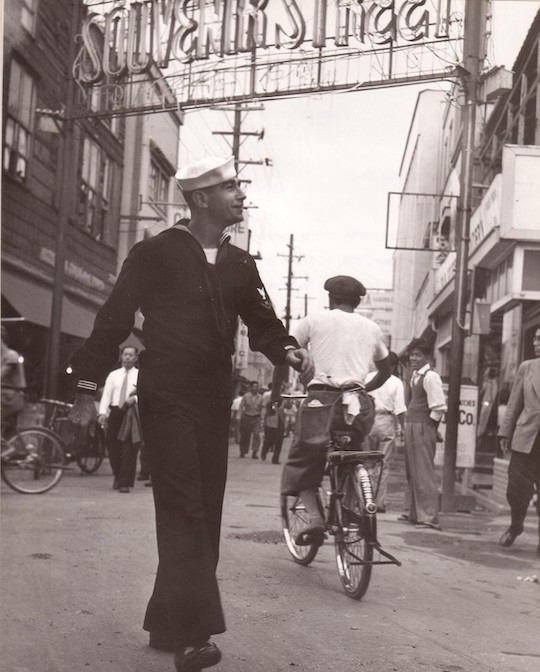
A look into the Charm and History of Sukajan "PRIDE OF YOKOSUKA Sukajan Exhibition" is being held at Yokosuka Museum of Art
Approximately 140 valuable vintage Skajan jackets owned by Taylor Toyo (Toyo Enterprises Co., Ltd.) are gathered here!

Mt. Fuji, Cherry Blossoms and Eagle Mid-1950s Taylor Toyo (Toyo Enterprises Co., Ltd.) collection
Unraveling the history of the coveted Sukajan and base culture
"Sukajan'' was born as a souvenir for American soldiers who stayed in Japan after the war . Jackets with gorgeous embroidery of eagles, tigers, dragons, etc. derived from Japanese clothing became popular among Japanese people as a symbol of admiration for American culture, which eventually appeared in American casual and vintage booms, and became known as the Yokosuka Jumper. It became established as "Sukajan'' for short and became very popular. The "PRIDE OF YOKOSUKA Sukajan Exhibition'' currently being held at the Yokosuka Museum of Art will introduce the ``base culture'' that developed around U.S. military bases across Japan by touching on its history and the culture of ``Dobuita Street,'' which was its main sales area. ” I will introduce a part of it. The exhibition period is from November 19th to December 25th, 2022 .

The centerpiece of the exhibition is Tailor Toyo (Tailor Toyo), a company whose predecessor was Minato Shokai, which delivered clothing such as sukajans to U.S. military facilities after the war, and which has been making souvenir jackets for more than half a century. Approximately 140 valuable vintage Sukajan jackets owned by Toyo Enterprises Co., Ltd. Valuable Sukajan jackets are lined up, including the 1946 YOKOSUKA Dragon , which is the only one with a pattern of "a dragon rising to the sky with open eyes'' that has been discovered.
A distinctive feature of these vintage skajans produced from the late 1940s to the 1960s is ``horizontal embroidery'', an embroidery technique unique to Japan that was realized using a special sewing machine . The exhibition will feature works by contemporary artists such as Kiyomi Osawa, Chiharu Tanuma, NUICO, and OZAKI FUMIN A, whose unique three-dimensional effects and beautiful colors created by craftsmen use this technique, which fascinated American soldiers at the time . is also on display.


Inside the exhibit, there is also a corner that introduces a part of the base culture that developed around U.S. military bases around the country after the war, through photos and documents from Dobuita Street, and products that were actually sold to U.S. soldiers. Using the strongly regional cultural representation of the skajan as an entry point, this exhibition can be said to shed light on American culture, which continues to have a major influence from the post-war period to the present, and the relationship between Japan and the United States.
